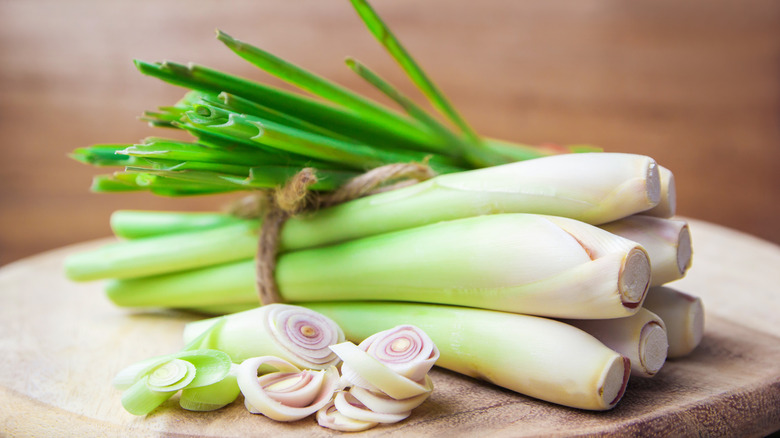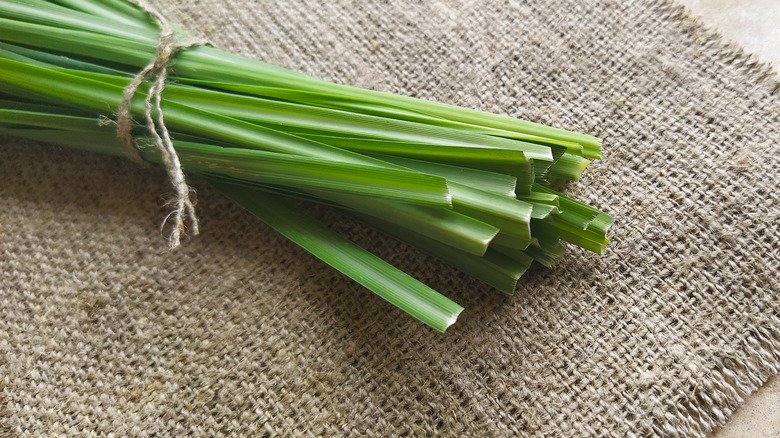How To Store Fresh Lemongrass So The Herb Actually Lasts
In a well-equipped kitchen, it's essential to have a dedicated shelf for fresh herbs. Not only do these herbs bring a natural, rustic ambiance and a delightful fragrance to the room, but they're also extensively used in cooking to amp up the taste and smell of dishes. One standout herb renowned for its exceptional fragrance is lemongrass, known for its citrusy scent and refreshing taste, making it a perfect addition to recipes like chicken banh mi, shrimp dumplings, fish curry, and even baked goods like meringue pies. However, like most fresh herbs, storing lemongrass long-term can be a headache, with an optimal shelf life of just a few weeks. Without the right storage method, this herb can wilt alarmingly quickly.
To keep lemongrass fresh, start by selecting the freshest stems while avoiding any yellowing or wilted ones and wrap them in damp paper towels, plastic wrap, or aluminum foil. This will lock moisture within the herb and keep it from drying out prematurely. Take a Ziploc bag and place the wrapped-up herbs inside, squeezing out any excess air before sealing up the bag. You want to keep as little air inside the bag as possible since air can quicken oxidation, which contributes to wilting.
Finally, store the bagged lemongrass in your refrigerator's crisper drawer. The temperature there is a lot more ideal for storing fresh herbs (32 to 42 degrees Fahrenheit) than in other places like the shelves on the fridge door, where temperature can fluctuate when you open and close the fridge.
Freeze lemongrass to keep it for months at a time
For the freshest and longest-lasting lemongrass, freezing is the way to go. It's a simple process that can extend its shelf life by several months. To freeze, start by selecting the freshest lemongrass stalks and giving them a good wash. Then, trim off the bulbous root and leaves, leaving you with straight, rod-like stalks. Place these stalks on a baking sheet lined with parchment paper, ensuring they have enough space between them to prevent sticking. Pop the sheet into the freezer to flash freeze for one to two hours until nicely frozen. Once they're ready, transfer the stalks into a freezer-safe container (mark the date of freezing for easy tracking) and chill in the freezer.
You can even store lemongrass by making frozen lemongrass ice cubes. Blend fresh lemongrass in a blender with a bit of water, then pour the purée into an ice tray and freeze. Store these cubes in a plastic bag in the freezer and use them as needed. If you don't want to take the freezing route, you can store your lemongrass in water. Simply place the stalks in a glass of water with their bases beneath the surface for a few days of extra use.
Keep in mind that frozen herbs will have inferior taste, aroma, and texture as the fresh stuff. If you frequently use lemongrass in your cooking, it'll be a good idea to freeze only a small portion and keep plenty of fresh lemongrass on hand.

